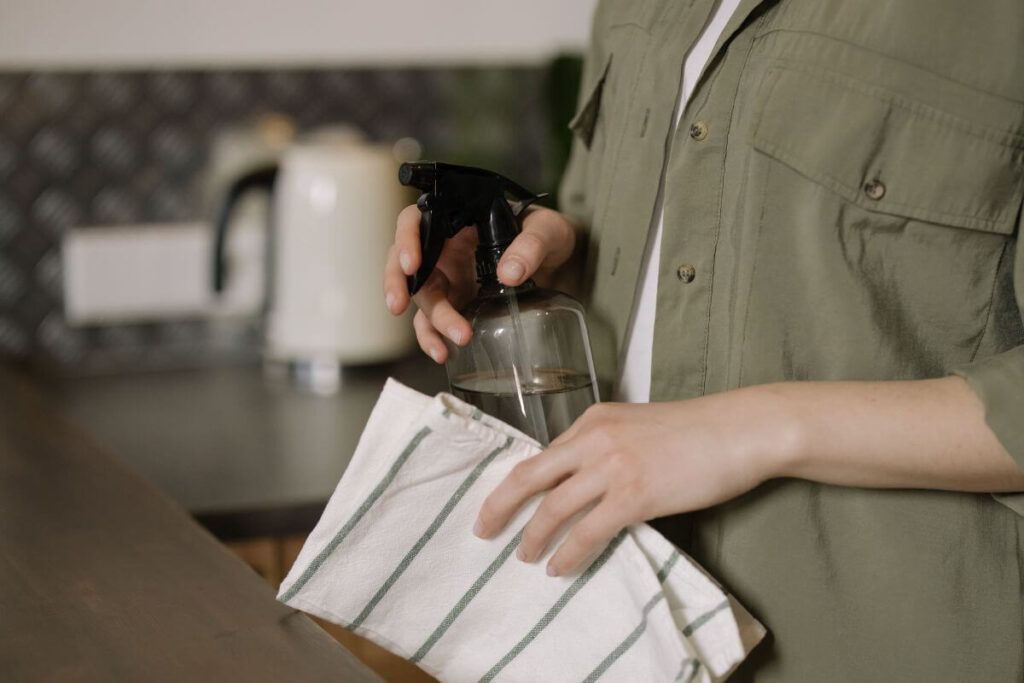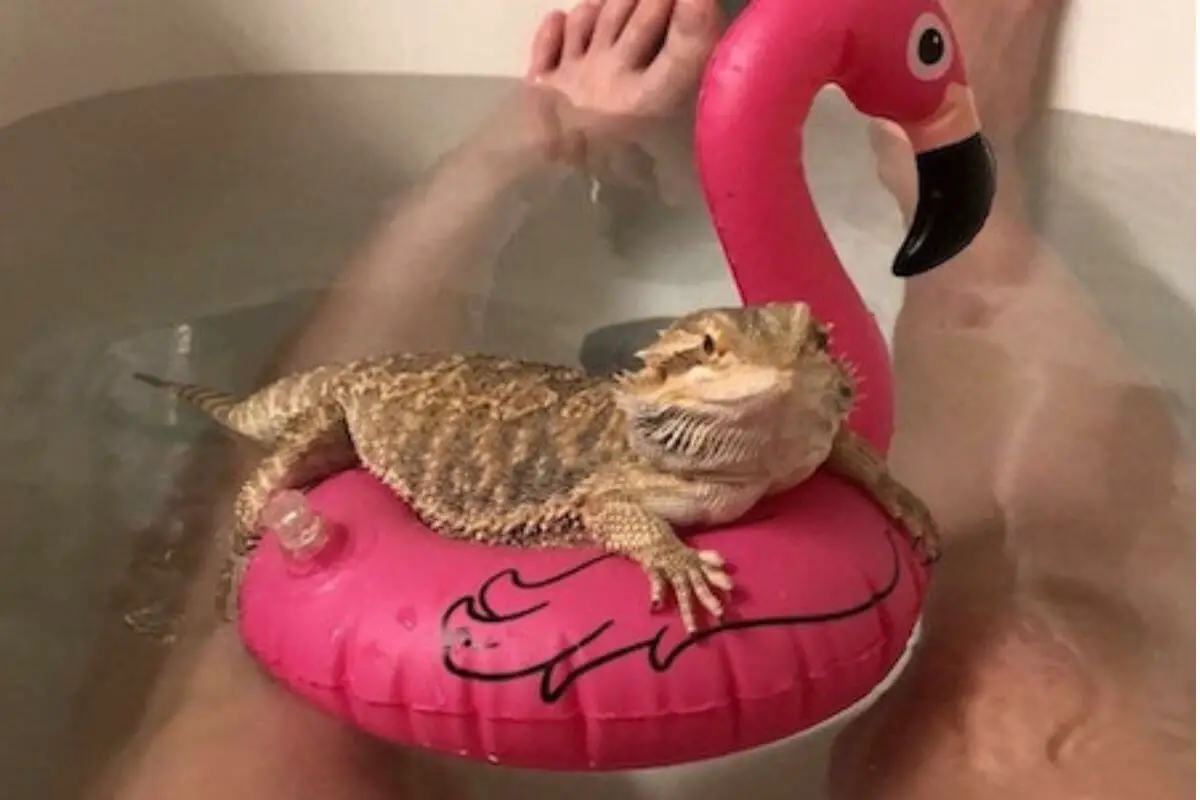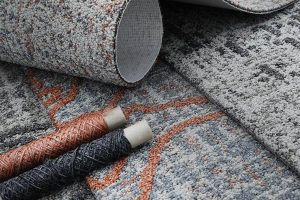Introduction
Bearded dragons are popular reptilian pets known for their unique appearance and charming personalities. Proper care for your pet bearded dragon includes maintaining their hygiene, and one common question that arises is, “Can I bathe my bearded dragon in tap water?” In this comprehensive guide, we will explore the considerations, benefits, and best practices for bathing your beloved bearded dragon in tap water.
Part 1: The Importance of Bathing Bearded Dragons
1.1 Aids in Hydration
Bathing is an essential aspect of a bearded dragon’s care routine. While they get most of their hydration from drinking water, regular baths can help prevent dehydration, especially in younger dragons who may not drink as much.
1.2 Promotes Shedding
Bearded dragons periodically shed their skin. Bathing helps soften and loosen the old skin, making shedding more comfortable for your pet.
1.3 Aids in Digestion
Bathing can stimulate urination and defecation, helping your bearded dragon maintain a healthy digestive system.
Part 2: Using Tap Water for Bearded Dragon Baths
2.1 The Tap Water Controversy
The use of tap water for bearded dragon baths can be a topic of debate among reptile enthusiasts. Some concerns include the presence of chlorine, chloramine, and other potentially harmful elements in tap water.
2.2 Dechlorinating Tap Water
To make tap water safe for bearded dragon baths, you can use a reptile-safe water conditioner or dechlorinator. This product neutralizes chlorine and chloramine, making the water safe for your pet.
Part 3: Bathing Bearded Dragons Safely
3.1 Bathing Container
Select a shallow, sturdy container for your bearded dragon’s bath. The water should be deep enough to reach their chest but not so deep that they struggle to keep their head above water.
3.2 Water Temperature
Ensure that the water is lukewarm, around 85-100°F (29-37°C). Bearded dragons are cold-blooded reptiles, and the warmth helps regulate their body temperature during the bath.
3.3 Supervision
Always supervise your bearded dragon during their bath. Accidents can happen, so never leave them unattended in the water.
Part 4: Best Practices for Bearded Dragon Baths
4.1 Frequency
The frequency of baths varies depending on age and specific needs. Younger dragons may benefit from more frequent baths, while adults can be bathed less often, such as once a week.
4.2 Handling
Gently support your bearded dragon in the water. Some dragons enjoy being gently stroked or sprayed with water during their bath, which can be a bonding experience.
4.3 Duration
Baths typically last 10-15 minutes. This is sufficient for hydration, shedding aid, and other benefits without causing stress to your pet.
Part 5: Alternative Bathing Methods
5.1 Spray Bottle
Some bearded dragon owners use a spray bottle to mist their pet with water. This can be an alternative to full baths and provides hydration and moisture for shedding.

5.2 Soaking in a Safe Environment
If tap water remains a concern, you can consider using filtered or bottled water. Always ensure it’s chlorine-free and safe for reptiles.
Bathing your bearded dragon in tap water can be a safe and beneficial practice if you take the necessary precautions. The use of a dechlorinator ensures your pet’s safety, and regular, appropriately supervised baths contribute to their health and wellbeing.
While the topic of tap water may generate some debate, the key is to prioritize your bearded dragon’s needs, ensuring they remain hydrated, comfortable, and happy. Always consult with a reptile veterinarian for specific care recommendations tailored to your pet’s unique requirements, and remember that a well-maintained hygiene routine is an integral part of responsible bearded dragon ownership.
Part 6: Common Concerns and Troubleshooting
6.1 Water Quality Concerns:
If you remain apprehensive about tap water quality, you can consider using a water filter to remove chlorine and chloramine. Many water filters designed for reptile care are available in the market.
6.2 Choosing a Suitable Container:
The bathing container should be easy for your bearded dragon to enter and exit. Additionally, it should be wide enough for them to move around comfortably but not so large that they can’t touch the bottom.
6.3 Water Depth:
Be vigilant about the water depth, especially with younger or smaller bearded dragons. They should always be able to keep their heads above the water. If you’re concerned, use a more shallow bath.
Part 7: Monitoring and Adaptation
7.1 Observe Your Bearded Dragon:
Pay attention to your bearded dragon’s reactions during baths. If they appear stressed or uncomfortable, it’s important to make adjustments to the bath’s duration or frequency.
7.2 Skin Health:
Keep an eye on your bearded dragon’s skin. If you notice persistent shedding problems or skin issues, consult a reptile veterinarian for guidance on improving their bathing routine.
Part 8: Individual Variations
8.1 Bearded Dragon Preferences:
Bearded dragons have unique personalities, and their reactions to baths may vary. Some may enjoy the experience, while others may feel stressed. Tailor the bathing experience to your pet’s comfort.
8.2 Age and Health Considerations:
The age and overall health of your bearded dragon can influence their bathing needs. Younger dragons may require more frequent baths, while older or unwell dragons may need less frequent baths.
Conclusion
Bathing your bearded dragon in tap water is a common and beneficial practice, provided you take the necessary precautions to ensure your pet’s safety and comfort. Dechlorinators and proper temperature regulation make tap water safe for your bearded dragon’s baths.
Remember that the goal is to enhance their overall wellbeing, aiding in hydration, shedding, and digestion. However, it’s essential to monitor your bearded dragon’s response to baths and adapt your routine accordingly. Your pet’s comfort and health should always be the top priority, and seeking advice from a reptile veterinarian can be invaluable in ensuring their care and hygiene needs are met.
FAQs
Certainly! Here are some frequently asked questions (FAQs) related to bathing bearded dragons in tap water:
1. Is it safe to bathe my bearded dragon in tap water?
Yes, it can be safe to bathe your bearded dragon in tap water, provided you use a reptile-safe water conditioner or dechlorinator to neutralize chlorine and chloramine, which can be harmful to reptiles.
2. How often should I bathe my bearded dragon in tap water?
The frequency of baths can vary based on your bearded dragon’s age and needs. Younger dragons may benefit from more frequent baths, while adults can be bathed less often, such as once a week.
3. Can I use filtered or bottled water for bearded dragon baths instead of tap water?
Yes, you can use filtered or bottled water, ensuring that it is chlorine-free and safe for reptiles. However, using tap water with a dechlorinator is a cost-effective and practical option for most bearded dragon owners.
4. What temperature should the water be for bearded dragon baths?
The water temperature should be lukewarm, around 85-100°F (29-37°C). Bearded dragons are cold-blooded reptiles, and the warmth helps regulate their body temperature during the bath.
5. How long should a bearded dragon’s bath last?
Baths typically last 10-15 minutes, which is sufficient for hydration, shedding aid, and other benefits without causing stress to your pet.
6. Can I use tap water directly without a dechlorinator for my bearded dragon’s bath?
It’s not recommended to use tap water directly for bearded dragon baths without a dechlorinator. Chlorine and chloramine in tap water can be harmful to reptiles. Using a dechlorinator is a simple and effective way to make tap water safe for baths.
7. What if my bearded dragon appears stressed during baths?
If your bearded dragon shows signs of stress during baths, such as frantic movement or vocalizations, consider reducing the duration or frequency of baths. It’s essential to prioritize your pet’s comfort.
8. Can bearded dragons bathe in larger containers, such as a sink or bathtub?
Bearded dragons can bathe in larger containers, but be cautious about water depth. Ensure they can comfortably keep their heads above the water and move around easily. A shallow bath in a sink or smaller container can be safer and more manageable.
9. What if my bearded dragon has persistent shedding problems despite regular baths?
If your bearded dragon experiences persistent shedding issues, consult a reptile veterinarian for guidance. They can help identify and address any underlying issues and provide recommendations for an effective shedding routine.
10. Is it necessary to monitor the water quality in the bathing container for my bearded dragon?
While water quality monitoring is not as critical for baths as it is for their drinking water, maintaining clean water in the bathing container is essential. Change the water regularly and clean the container to prevent bacterial growth and maintain hygiene for your pet.
Remember that the primary goal of bathing your bearded dragon in tap water is to enhance their overall health and comfort. Adapt the bathing routine to suit your pet’s needs, and seek professional advice when necessary to ensure their wellbeing.




